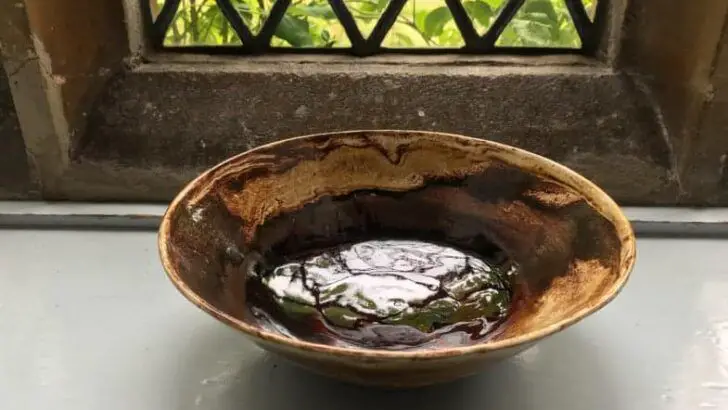What Is Clay That Has Been Fired Once?
Clay is a naturally occurring material composed primarily of fine-grained minerals, which is plastic when wet and hard when fired. Clay is formed over long periods of time from the gradual chemical weathering of rocks. The types of clay differ based on their mineral composition and firing characteristics.
The firing process is key to creating finished ceramic pieces. Firing clay involves heating it to high temperatures in a kiln, causing chemical and physical transformations. There are several stages of firing clay. The first firing is done at a lower temperature and converts raw clay into a stable, bisque material. This initial bisque firing prepares the clay for glazing and subsequent firings. Once fired, clay becomes permanently hard and can no longer be returned to a plastic state with the addition of water.
Clay Composition
Clay is composed of fine-grained natural materials. The primary ingredient of clay is silica in the form of silicon dioxide (SiO2). Other ingredients typically found in clay include alumina, various alkali metals, and trace minerals like iron, magnesium, and calcium. Based on the composition, clays can be categorized into several common types:
Kaolin clay, also known as China clay, is made up of kaolinite. It has very low plasticity. Ball clays contain kaolinite along with other clay minerals and have high plasticity. Fire clays are composed of hydrous aluminum silicates with varying percentages of fluxes like iron oxide and alkalis. They are heat resistant and used to make ceramics. Common clays contain various clay minerals like illite, chlorite, and smectite. They have moderate plasticity. Bentonite clays are composed predominantly of smectite clay minerals like montmorillonite. They have very high plasticity.
The First Firing Process – Bisque Firing
Bisque firing is the first firing process for clay. During bisque firing, clay transforms from its soft
“greenware” state into a stable, porous ceramic material by exposing it to high heat in a kiln typically
ranging between 1600°F and 2200°F (871°C to 1204°C) (“Bisque Firing 101”). The heat causes chemical and
physical changes to the clay body through the process of vitrification.
As the temperature rises in the kiln, moisture evaporates from the clay followed by the burning out of any
organic matter (“A Mini Guide To Bisque Firing [Tips & Tricks!]”). Next, at around 1000°F (538°C), quartz
inversion occurs which causes the clay body to shrink and solidify. Between 1000-1100°F (538-593°C), carbon
burns out. Finally, at around 1800°F (982°C), partial vitrification begins which fuses clay particles together
(“Bisque Firing 101”). The result is a hard, porous ceramic material ready for glazing and the second firing.

Properties After First Firing
Once clay has undergone the first firing process, known as bisque firing, it has a number of characteristic properties.
First, the clay becomes much harder and more durable. According to The Pottery Wheel, bisque firing causes the “complete vitrification of the clay body,” which makes it strong enough to withstand handling and glazing without damage. The bisque firing process also makes the clay insoluble in water.
Second, bisque firing makes the clay porous. As described by Pottery Crafters, firing drives off chemicals, minerals, and organic material, leaving tiny holes throughout the clay that make it more absorbent in preparation for glazing. However, bisque ware is still less porous than unfired clay.
Third, the clay undergoes color changes during bisque firing due to chemical reactions within the clay body at high temperatures. The final color depends on the clay composition and temperature, ranging from light red or buff to dark brown or gray. Decorative elements applied before bisque firing like stains, oxides, or slips will be permanently affixed.
In summary, once-fired clay has increased strength, porosity, and permanency of color while remaining permeable and able to absorb glazes and stains.
Uses for Once-Fired Clay
Once-fired clay, known as bisqueware or bisqued clay, has several common uses in pottery and ceramics:
Greenware refers to unfired clay that is soft and malleable. Bisque firing hardens the clay through vitrification, making it less porous and more durable while still absorbing water. This transforms soft greenware into bisqueware that is strong enough for regular use. Common bisqueware items include tableware like plates, bowls, mugs, and figurines.
Bisqueware clay is also ideal for hand sculpting and carving intricate details. The hardened yet still absorbent bisqued surface accepts glazes, stains, and paints well. Many ceramic artists use bisqueware as the base for their glazing projects. The absorbent bisque provides adhesion for the glaze and allows colors to come through vividly.
For casual pottery, bisque firing provides basic functionality and strength without a glossy finish. Bisqueware’s dull, earthy look has an organic, handmade feel even before applying glazes or decorative techniques. Many artisans sell bisqueware pottery that showcases the natural clay color and texture.
While bisqueware is strong enough for regular use, the porous surface requires glazing before holding liquids. A second firing melts the glaze coating for an impermeable finish. However, bisqueware is sometimes left unglazed for decor and display. Overall, once-fired bisqueware offers versatility across many ceramic applications.
(Source: https://potteryhelp.com/what-is-bisqueware-clay-bisqueware-clay-definition/)
Second Firing (Glazing)
The second firing, also known as the glaze firing, is done after the bisque firing to apply colored glazes to the ceramic piece. Glazes are mixtures of minerals and compounds like silica, borax, and kaolin that melt and form a glassy coating on the clay at high temperatures. According to The Crucible’s guide, typical glaze firing temperatures range from cone 06 (1,822°F) to cone 10 (2,316°F) depending on the glaze.1 Each glaze has an optimal firing temperature that causes it to melt, flow, and interact with the clay body in the desired way.
During the glaze firing, the piece is loaded into the kiln and heated up steadily until it reaches the target temperature. The glaze melts into a smooth, glossy coating over the bisque clay surface. Cooling is also gradual to prevent cracking. Once complete, the glazed ceramic piece achieves its final color, texture, and protection. Properly glazed pieces are non-porous, making them functional for holding liquids without leaking.
Glazing serves both decorative and functional purposes. It creates an impermeable seal on the porous clay, adds color, effects like crackling or metallic accents, and can make the surface glossy, satiny, or matte. Glazing transforms bisque ware into a finished ceramic object ready for use.
Comparison to Twice-Fired
Clay that has only been fired once, known as bisqueware, has some notable differences when compared to clay that has gone through a second firing.
Physically, bisqueware is more porous and permeable to water than twice-fired clay. This means it can absorb moisture and liquids more readily. Twice-fired clay develops a non-porous glassy surface through the second firing and glazing process that makes it impermeable to water. This difference is important for determining the uses of the clay.
In terms of uses, bisqueware is more limited. Because of its porosity, it cannot hold liquids or be used as dinnerware. However, bisqueware is often used to make greenware pottery, flower pots, decorative items like figurines, and can be painted or decorated at this stage. Twice-fired clay has a much broader range of uses including tableware, cookware, art pottery, tiles and more durable items.
For more decorative items like figurines, some artisans prefer bisqueware because it provides a nicer surface for applying colors and details by hand. The porosity allows paints and stains to adhere better. So bisqueware creates more possibilities for custom decorative finishing.
In summary, the key differences are that once-fired bisqueware is more porous and permeable to liquids while impermeable twice-fired clay has a harder, glassy surface making it suitable for more functional uses. Bisqueware enables more decorative crafting possibilities.
Sources:
https://www.reddit.com/r/Ceramics/comments/jmqycy/do_i_always_have_to_fire_clay_twice/
https://thepotterywheel.com/do-you-have-to-bisque-fire-pottery/
Interesting Facts About Bisque Firing
Bisque firing has been used in pottery and ceramics for thousands of years. Some interesting facts about this technique include:
The word “bisque” comes from the French word meaning “baked clay.” Bisque firing was developed in France and Germany in the early 1700s. (Ceramic Arts Network)
Bisque firing originated as a way to make unfired clay strong enough for decoration and glazing. The first bisque firing hardens the clay body so it can withstand subsequent handling and glazing.
Bisque firing is done at lower temperatures, usually around cone 04-06 (1222°F-1646°F / 660°C-900°C). This is lower than the final glaze firing temperature.
The bisque firing changes the clay chemically and physically. Water evaporates, organic material burns out, and chemical transformations begin. (Soul Ceramics)
Unglazed bisque ware has an absorbent, matte surface that’s perfect for applying glazes, underglazes, and decorations. After glaze firing, the ware becomes non-porous.
Bisque firing makes the ware lighter in weight and slightly smaller due to loss of water and shrinkage. Pieces may shift or warp slightly.
Historically, bisque figures and dolls became popular in Europe in the 19th century for their beauty and intricacy. Many antique bisques are highly collectible today.
FAQs
Some common questions people have about firing clay once include:
What temperature do you bisque fire clay to?
Most clays are bisque fired to around cone 04-06 which is approximately 1,815-2,090°F. However, check the manufacturer’s recommendations as the bisque temperature can vary slightly by clay type. Firing too hot can cause bloating.
Can you glaze bisqueware?
Yes, bisqueware refers to clay that has been fired once to harden it. It is ready for applying glaze and glaze firing. Unglazed bisqueware is porous and absorptive.
What happens in the bisque firing process?
Bisque firing:
– Hardens the clay body
– Burns out any organic matter
– Evaporates chemical water
This makes the clay less porous and ready for glazing and glaze firing.
Do you have to bisque fire before glazing?
Yes, clay must be bisque fired before applying glaze. The bisque firing process hardens the clay so it can withstand the glaze firing without cracking or breaking. The bisqueware provides a stable base for the glaze.
Why is it called bisque firing?
The term “bisque” comes from the French word meaning twice-cooked. Bisque firing is the first firing, before glazing. The glaze firing is the second firing.
Conclusion
In summary, clay that has been fired once goes through an initial hardening process in a kiln up to around 1,000°F. This transforms the clay body by driving off any remaining water and organic matter, inducing vitrification, and changing the clay’s molecular structure. Once-fired clay is porous and able to absorb water. It will not become watertight until it undergoes a second firing at a higher temperature with a glaze. Once-fired clay has various uses including making bisqueware pottery, creating greenware ceramics, mold making, slip casting, and firing test tiles. While it is in a durable state, it requires a second firing at a higher temperature with a glaze to make it impermeable to liquids. The first firing provides an important step in the creation of finished ceramic ware.
In closing, understanding the properties and uses of clay after a single firing provides insight into the ceramic production process. With its hardened yet still porous body, once-fired clay occupies an interim state between raw clay and fully vitrified ware. It represents a milestone along the journey of crafting beautiful and functional ceramic objects.

